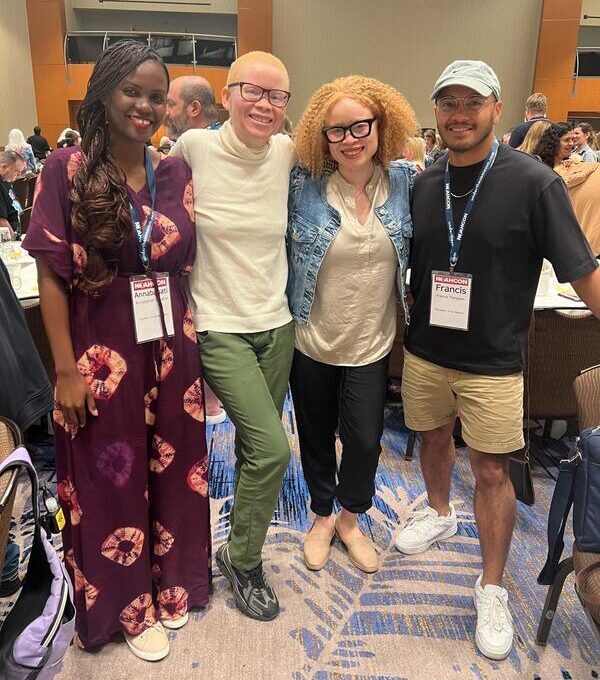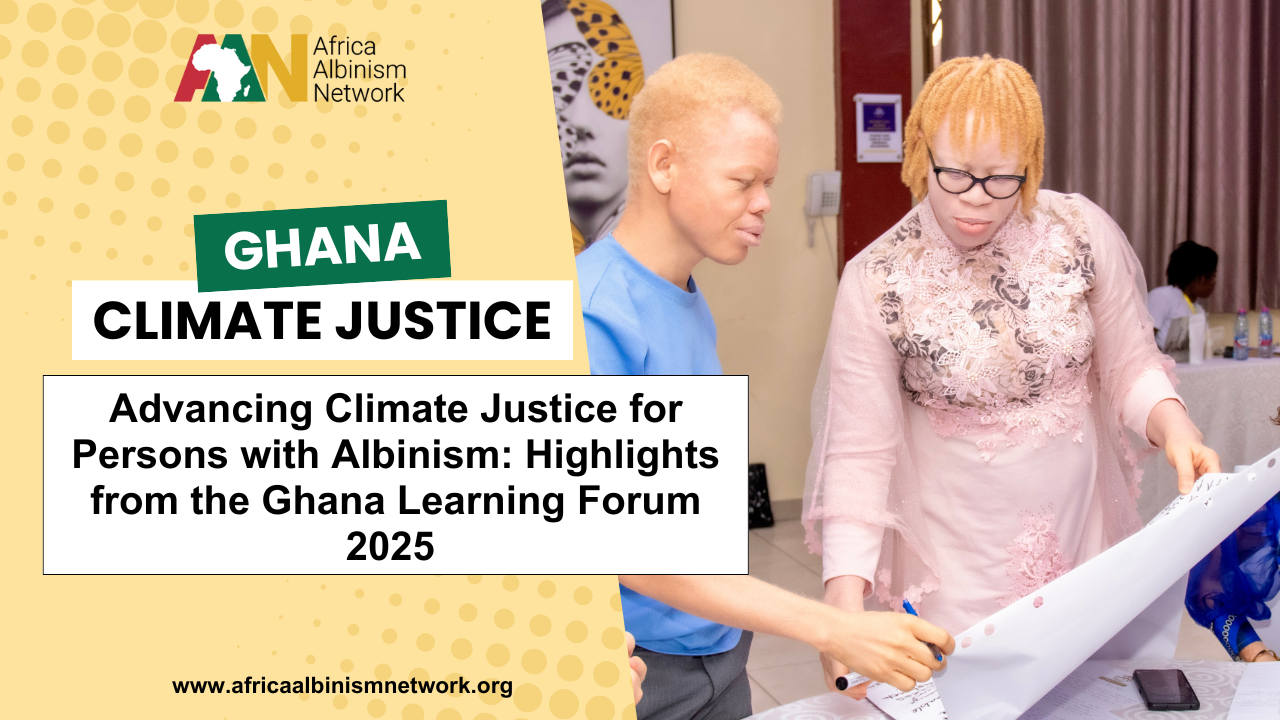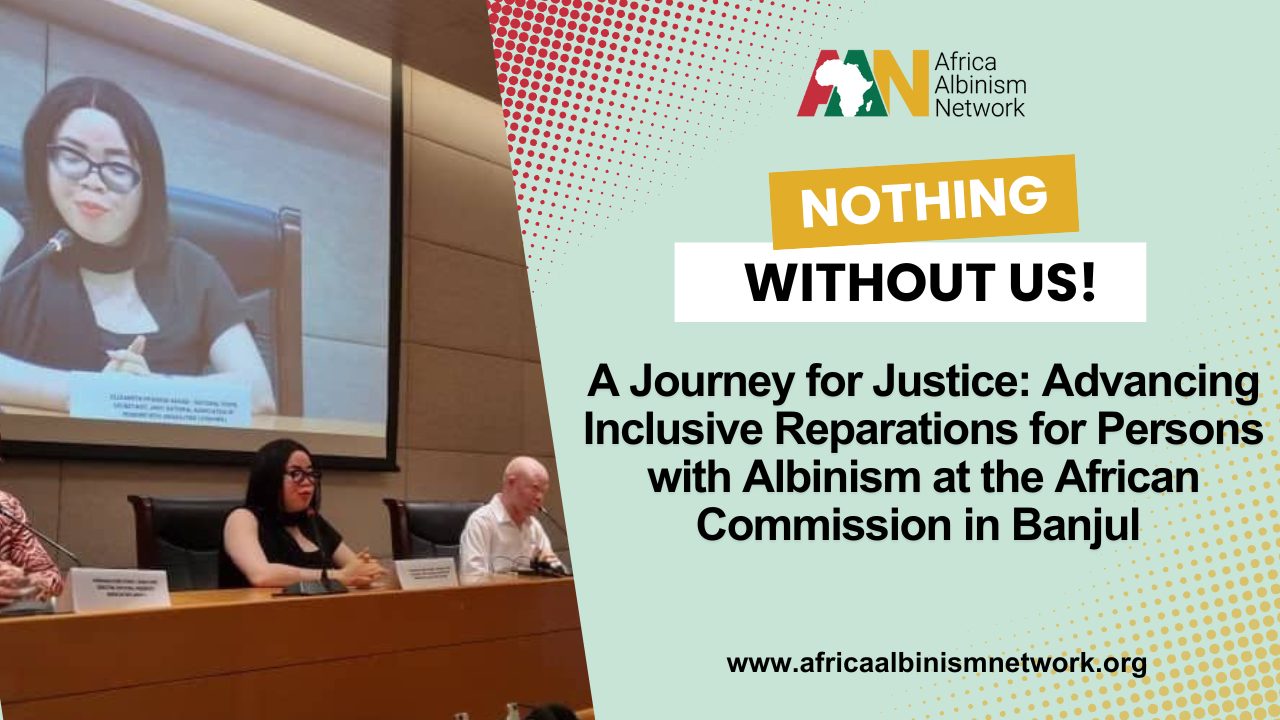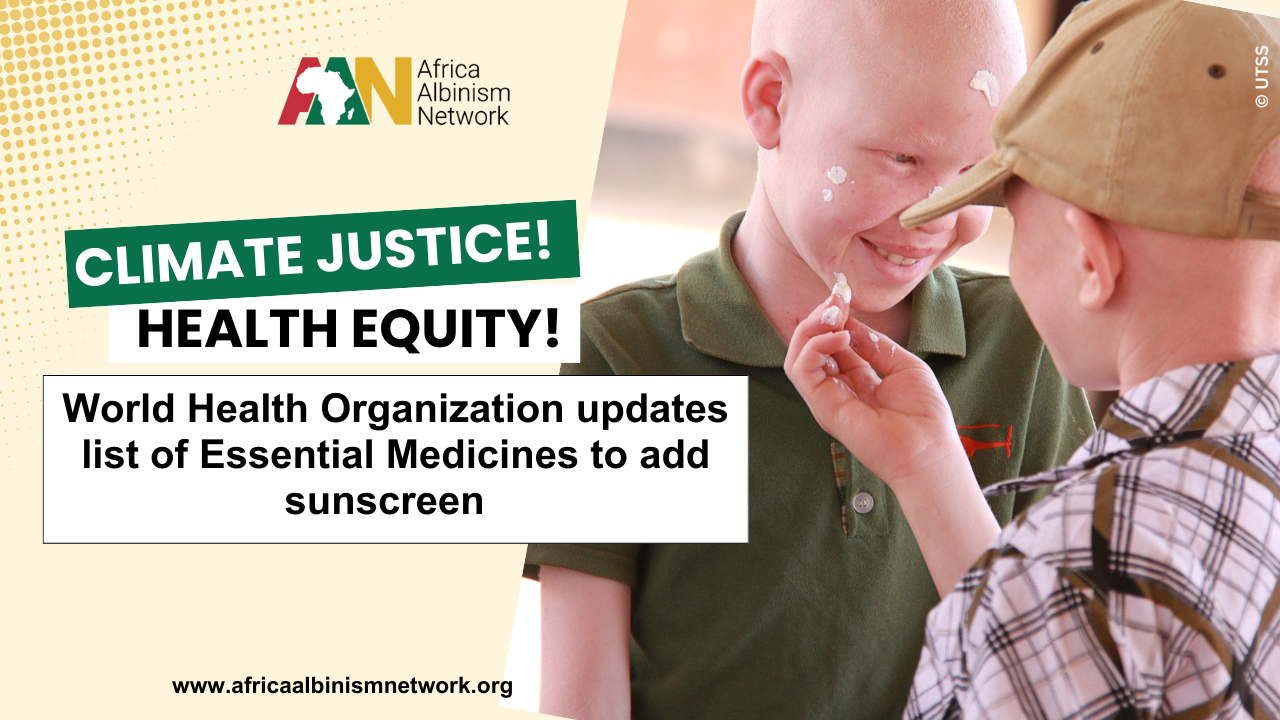After five years of involvement in the albinism advocacy movement across Africa, I had my first opportunity to travel outside the continent to attend NOAHCon 2024 in California. NOAH Con is a friends and family-friendly biennial conference organized by the National Organization for Albinism and Hypopigmentation (NOAH) in North America. This experience was not only a personal milestone but also a professional eye-opener, offering insights into how albinism advocacy differs across continents.
Understanding Albinism Through a New Lens
I come from Africa, more specifically Tanzania, where issues such as stigma, harmful practices, and attacks on people with albinism are tragically common. I went to the conference curious about how albinism is understood and addressed in North America. While the challenges faced by people with albinism in North America are significant, they differ in nature. For instance, harmful myths that fuel attacks and killings of persons with albinism in Africa is a phenomenon that is largely absent from the North American context. Instead, discussions are centered more around how to improve quality of life, such as access to low vision assistive devices and inclusive education.
A key feature of the conference was its family-oriented nature. Parents, siblings, and even friends of people with albinism were among the participants, creating a wholesome and supportive atmosphere. In contrast, events organized in Africa often involve a majority of individuals with albinism and, occasionally, their immediate family. Notably, many fathers would be noticeably absent in such settings, which highlights issues of access and a cultural difference in parental involvement and acceptance.

Fundraising: A Community Effort
Another element of the conference that stood out was the innovative approach to fundraising. Unlike similar conferences in Africa, which often rely on institutional funding and/or corporate sponsorships, this event actively relied on attendees to generate resources. Families and individuals contributed as volunteers and put up items for auction, creating an engaging way to support the cause. This model could be considered for advocacy events organized in Africa, which can foster a sense of ownership and decrease reliance on institutional donors.
Emphasis on Low Vision
The focus on low vision was another difference I observed. In North America, parents and individuals sought advice on assistive technologies and strategies to improve visual accessibility. This contrasts sharply with Africa, where skin cancer prevention often takes precedence due to a higher prevalence and its more devastating impact. The availability of resources and specialists in North America also seems to enable a broader focus on quality-of-life improvements, an area that appears to be underdeveloped and less accessible in many parts of Africa.
Experiences of Black Americans with Albinism
One particularly enlightening session delved into the experiences of Black Americans with albinism. As a Black African, I found the intersectionality of race and albinism in the United States both fascinating and eye-opening. It seemed to illustrate the complexities of identities and color across ethnic and racial bounds.
Individuals with albinism from across the U.S., along with their families, opened up about their lived experiences. Black Americans with albinism described feeling caught between two worlds, not fully accepted as Black or White. This contrasted with the experiences of White Americans with albinism, who did not seem to face the same struggles of a racialized identity. Some striking insights came from melanated parents of children with albinism. Many shared stories of how they were often mistaken for nannies when they were seen out with their children due to societal assumptions about race, color, and family dynamics. This underscored how albinism challenges racial perceptions in ways that are both unique to the American context and the global context at large.
Overall, the session highlighted the shared challenges and distinct cultural nuances of people with albinism, affirming the importance of creating spaces like these, where diverse experiences can be shared, explored, and more deeply understood.
A Holistic Conference Approach
The layout of the conference was uplifting. It offered customized sessions for various groups, including parents, children, teens, and adults with albinism. The inclusion of family members and friends helped create an environment of shared learning and support. This model encouraged a broader understanding of albinism and strengthened community bonds.
Another refreshing aspect was the blend of educational sessions and recreational activities.
“The event felt like a vacation with a purpose, offering families time to relax while gaining valuable knowledge.”
This holistic approach could greatly benefit African conferences, making them more attractive for self-care while being impactful.
Summary of Potential Lessons for African Albinism Advocacy:
- Community-Driven Fundraising: Introducing auctions and donations from participants could provide a sustainable funding model. Families could contribute items reflective of their local cultures, fostering a sense of community and shared responsibility.
- Volunteer Engagement: Leveraging volunteers, including family members of people with albinism and community advocates to both reduce costs and enhance the sense of ownership.
- Tailored Programs: Designing concurrent sessions for different age groups and stakeholders that are both formal and recreational respectively to ensure that everyone involved gains meaningful insights and holistic support.
- Family Inclusion: Making formal advocacy events more family-oriented could improve acceptance and support for individuals with albinism in Africa.
- Focus on Assistive Technologies: Increasing awareness and access to low vision aids and assistive devices should increasingly complement ongoing efforts around skin cancer prevention in Africa.
Overall, NOAHCon 2024 was an encouraging experience offering lessons that can be adapted to the African context. While the challenges faced by people with albinism differ globally, the shared goal of promoting understanding, acceptance, and support are common experiences and desires across Africa and North America. These experiences also suggest that we can learn from one another. By incorporating some of the strategies I observed, the African albinism movement can grow the already impressive albinism movement, into a stronger one. One that is better equipped to address both the unique challenges on the continent and those shared experiences that bind us.
Photo Credit: (Left to Right) Annabahati Gwacha, AAN; Grace Wabanhu – Village of Hope Tanzania; I.K Ero – AAN; Francis Tiangson – Under the Same Sun


